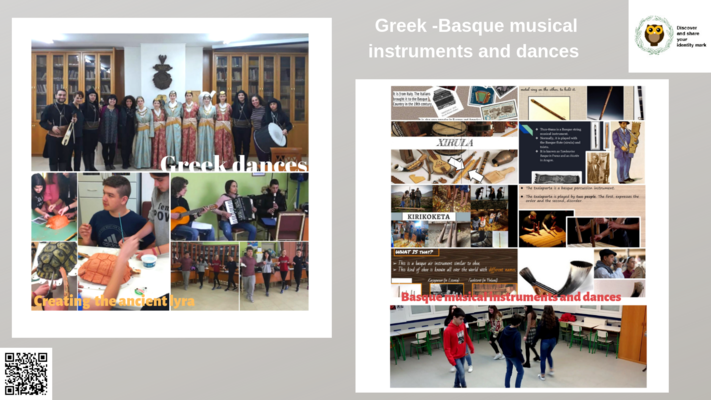The activity was created and done in the Music class
DIDACTIC UNIT P 8,9,10. Basque Greek musical instruments and dances.docx
The prepartion of the murals of Basque instruments
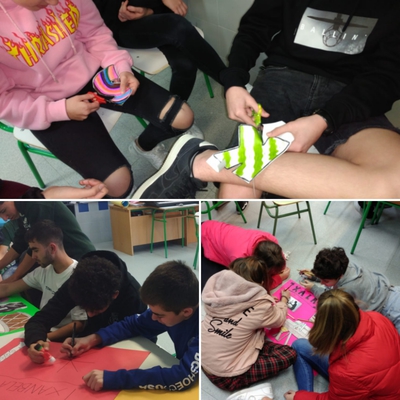
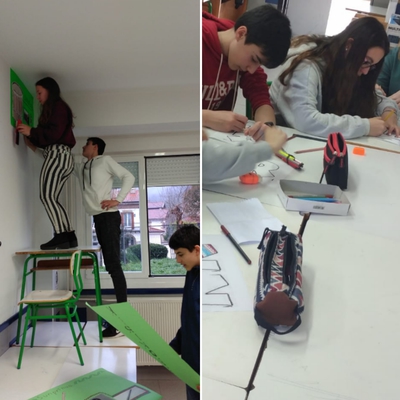
Murals of Basque musical instruments on the walll in the Music class
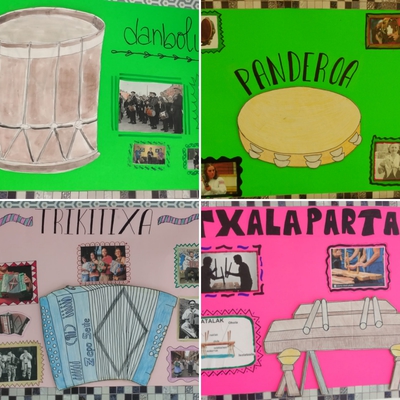
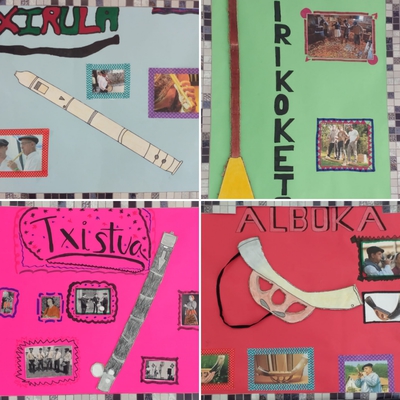
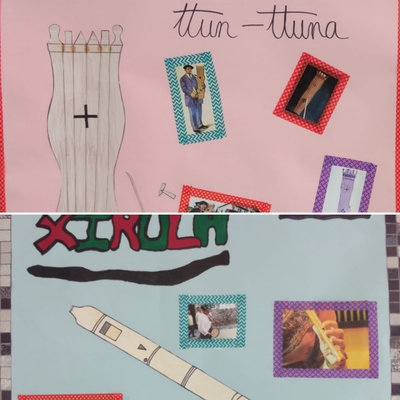
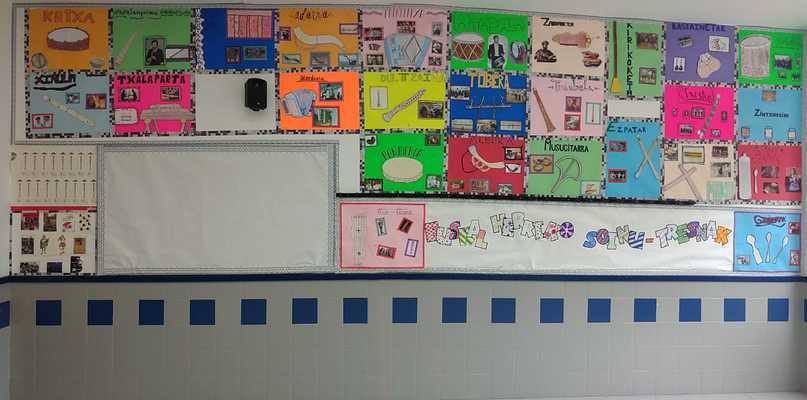
Musical instruments. PowePoints of the musical instruments
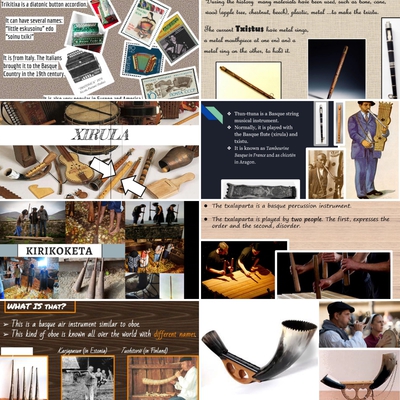
" Zazpi jauzi" dance
Elexalde students and Katerini teachers danced a Greek dance together in our C3 short-term joint staff training event
On December 3rd 2019 Elexalde school celebrated the International Day of the Basque Language and all the students of he school danced jauzi zazpi for Greek students.
This is the song students created for Katerini students. They created the lyrics and used Greek music.
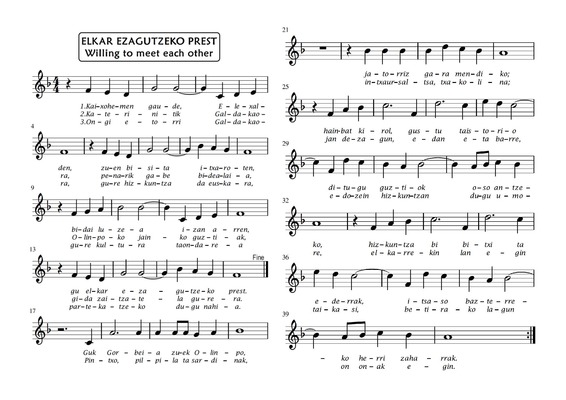
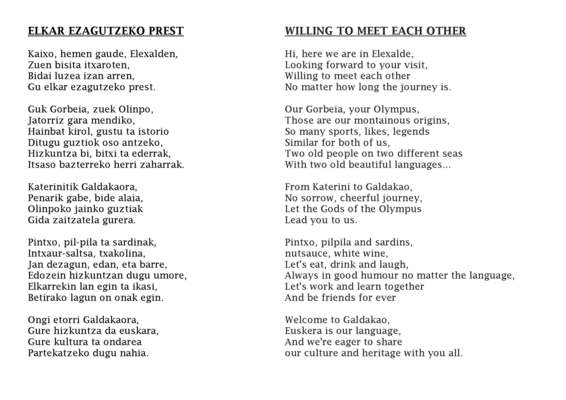
ELKAR EZAGUTZEKO PREST-PARTITURA ETA LETRA.pdf
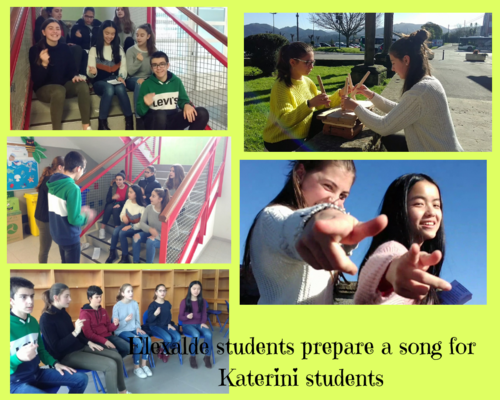
Some students of 3 DBH performed some typical Basque dances as part of our heritage .
The first one is the dance of the the Basque flag Ikurrin dantza or Agintariena.
This is the dance that is performed to make the intoduction of the dances to the audince, so it is danced in the first place. The more characteristic is the waving of the BasqueFlag ( ikurriña) on the top of the heads of the dancers.
Aurresku the bow: the " Agurra" is danced in ceremonies and to bow to important personalities.
This dance was danced by a group of five students to welcome Greek teachers in the second mobility, when they visited us in Bilbao.
Aurresku to welcome Greek teachers
Students danced the Greek dance hasapiko learnt in the Music class for all parents in he OPEN DAY in June. This is the dance they performed in the students´mobilities
Assessment
Kahoot
https://create.kahoot.it/share/euskal-herriko-soinu-tresnak/aeb1da92-02a3-4b56-9a62-88325c2df795
Another activity related to them which took place during the extension of the project 2020-21 was the following: students of 4 dbh of the school year 2020-21 created some kahoots related to Greek instruments and dances. They presented to the class and played the kahoits.
All the videos of the presentations can be foubd on this eTwinning platform at the end of it in the section extension of the project.
The kahoits are on the blog of the project .
3rd Junior High School Katerini
Title of the activity: Traditional Greek dances
Objective: The objective of this activity is to learn some traditional Greek dances, practice them and present them to their Basque partners.
Description of the activity:
- Three dances were chosen to be presented to the Basque students.
- The first one is Hasapiko, which is the base for the well-known dance Syrtaki. The name Hasapiko comes from the word "butcher" (χασάπης, derived from Turkish kasap). The dance was danced among members of the Butcher's Guild in Constantinople in Byzantine times. The fast version of the dance is called Hasaposerviko - the latter being a reference to Serbian and other Balkan Slavic influences on this version of the dance.
- The second one is Omal, a Pontian dance, danced by the Greeks of the Pontus region (in the Black Sea). The Pontian music is mainly played by a Kementze (Lyra) and Daouli (drum) and sung in the Pontian dialect. This dialect is deeply rooted in the Ancient Greek language and remains a dialect still used today. Through traditional music, the Pontian culture and history was preserved for future generations. Dance also plays a big part in the Pontian culture.
- And the third dance is a Syrtos from the region of Macedonia. It is danced to the rhythm of the song “My red apple” and is mostly sung and danced at weddings.
- After the students practiced the particular dances we arranged to have them videotaped. For that reason we were kindly accepted to various cultural clubs and unions (Pontian Union and Dryanista), where we had the opportunity to put on the traditional dresses suitable for each dance. In the cultural union of Dryanista we were also taught two more dances (apart from Syrtos), that are danced in the area of the Pierian mountains.
Title of the activity: Greek musical instruments
Have a look at the following padlet to find out more about ancient Greek musical instruments and music.
The Greek students wrote the lyrics to the following song, based on the music of the Basque song "A bird is a bird". We dedicate it to our Basque friends.
Our students also created a replica of an ancient lyre.
